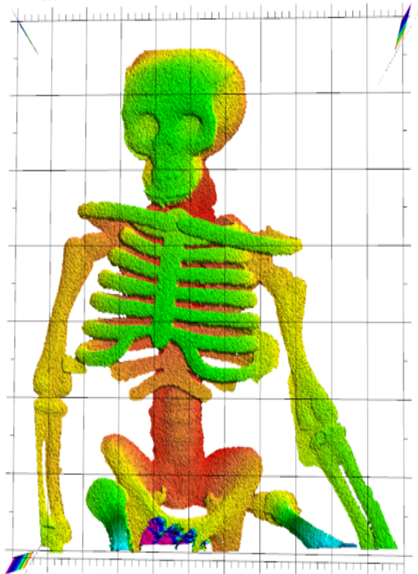Just when you thought lidar—which fires millions of tiny lasers as a means of measurement—couldn’t get any awesomer, it did.
Researchers at the National Institute of Standards and Technology (NIST) have shown that lidar can image effectively through fires. NIST argues that this makes lidar a great tool for measuring structures as they break down in flames, because it works at a safe distance, it’s compact, and it images precisely even in the presence of soot.
According to NIST’s article, the team measured a piece of chocolate and a super-rad plastic skeleton as they melted in a fire. “We needed something that doesn’t melt too fast or too slow, but you still see an effect,” explained project leader Esther Baumann. “And I like chocolate.”
The 3D mapping system that NIST appears to have been a proprietary system that sweeps a seriously cool laser “continuously across a band of optical frequencies. The initial laser output is combined with the reflected light from the target. The resulting “beat” signals are detected, and this voltage is then analyzed by digital signal processing to generate time-delay data, equivalent to distance. (The difference in frequency between the initial signal and the one received from the target increases with distance.)”
NIST’s system can map point clouds even in turbulent environments with strong signal scattering and distortion. When compared to a video of the skeleton melting, the laser-scanning imagery “revealed complex shapes otherwise hidden behind flames—details of the ribcage and hips.” Keep this in mind if you’re planning to direct any heavy metal videos in the future.
The initial experiments saw researchers lighting the objects on lab burners, but the NIST team will scale it up to try fires at 1 meter wide, and pending the success of that step, “larger structural fires.”






